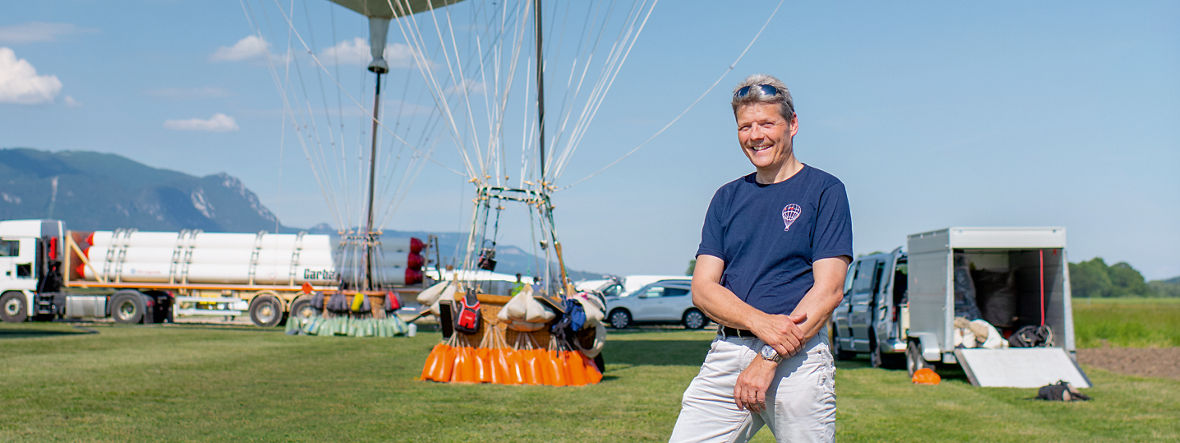In my Element - Hydrogen
Sometimes you look down and think: If we were to plunge out of the sky, we wouldn’t survive —my teammate, Pascal Witprächtiger, and I. It makes you shiver. Our fate depends entirely on a balloon filled with hydrogen. Hydrogen is the lightest element on earth, much lighter than air. It is this property that enables a hydrogen balloon to take off from the ground and fly through the air. The thing about ballooning is that the only way of steering is by means of ballast. This is how you regulate altitude so as to find the right current of air to take you forward. This is the great challenge in the Gordon Bennett Cup, the world championships in gas ballooning. The team that covers the greatest distance wins the contest. One time, we covered 3,500 kilometers, which took us 77 hours. There are two of us in the basket, and we each do four-hour shifts piloting the balloon. Apart from that, there’s plenty of time to enjoy the peace and quiet—and of course the spectacular view. It’s moments like these that make ballooning so enjoyable. After a race, when we’re back again on firm ground, the first steps always feel a little bit funny. Of course we’re also relieved that everything has gone well. But our dream is to stay up in the air for 100 hours. Nobody has ever achieved that, and that’s our goal! Despite the great distances you cover and the long hours you spend in the air, time just “flies” by when you’re up in a balloon.



